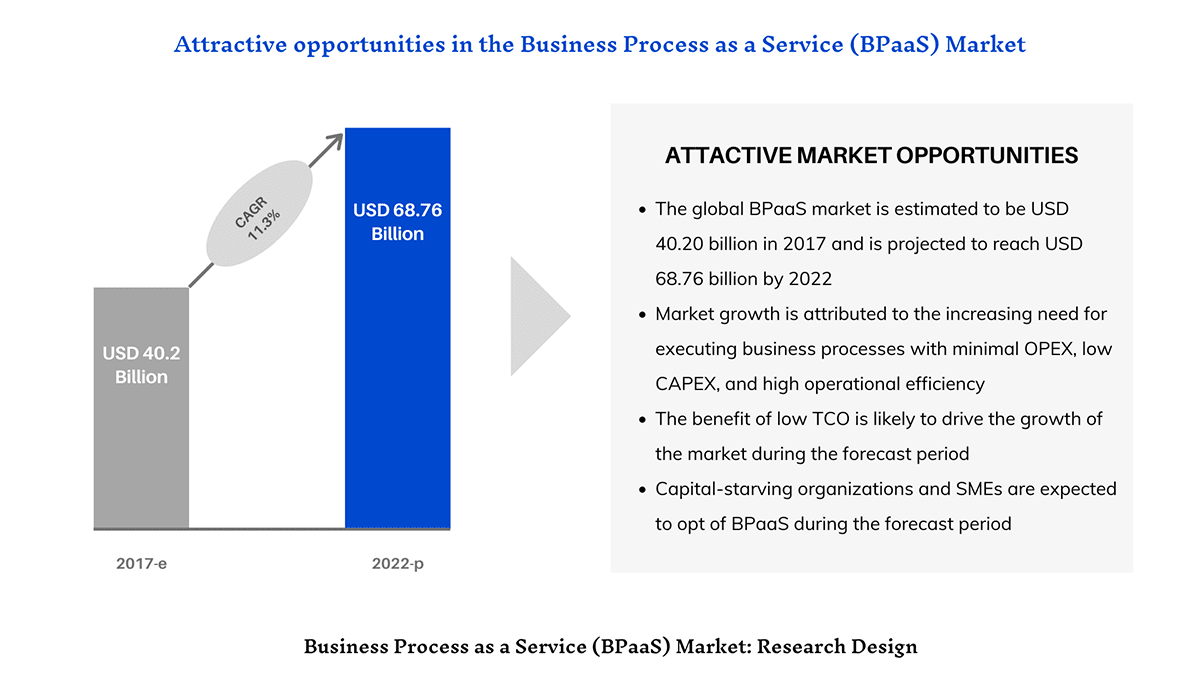All About Business Process Transformation

Key takeaways
- Complete business transformation results in higher productivity and process efficiencies.
- Business process transformation is similar to reengineering the process to bring operational efficiency and accelerating time-to-market for products and services.
- The factors that drive growth of the Business Process as a Service (BPaaS) market are need for regulatory compliance, business agility, and quicker time to market.
- A well initiated and planned business process transformation can progress at neck-break speeds.
- Setting clear goals for the business process transformation is primal for successful transformation.
What is Business Process Transformation?
Business process transformation is the complete overhauling of key business processes for improving operational efficiencies and accelerating the time to market. Another way to put it is business process transformation is reengineering of processes. Business process transformation when done right brings complete change in the way business functions and workflows are carried out. Read on to understand more on business process transformation, its need and ways to go about transforming core business processes.
Table of Contents
Market Drivers of Business Process Transformation
As per Markets and Markets Research, the BPaaS is poised to grow at a CAGR of 8% to reach USD 92.9 billion by 2028. The BPaaS market encompasses various services like human resources, finance and accounting, procurement, customer services, and supply chain management. The key market drivers include increased adoption of cloud computing, need for greater operational efficiency, and growing complexity of business processes.
Adopting business process transformation by embracing BPaaS enables businesses to bridge the compliance gaps and modify their business processes accordingly.
The main focus of business process transformation is innovation and adoption of new capabilities, technology, and concepts. Successful business transformation involves evaluation of current processes and identifying steps required for enhanced business outcomes.
Successful business process transformation not only helps establish sustainable business practices, but also helps businesses grow with newer innovations. A deeper level of planning, integration, and alignment is necessary for successful business process transformation.
According to a Markets and Markets report, the Business Process as a Service (BPaaS) market is poised to reach 68.76 billion USD by 2022 growing at a CAGR of 11.3% during the forecast period of 2015-2022.
The factors driving the market growth are
- Need for regulatory compliance
- Business agility, and
- Quicker time-to-market

There is an increasing need for business processes to comply with regulations, irrespective of the type/size of the organizations. Dynamic government regulations make it difficult for businesses to keep track of and update their policies accordingly. Opting for a Business Process as a Service solution enables businesses to bridge the compliance gaps and modify their business processes accordingly.
Need for Business Process Transformation
Business process transformation is undertaken to achieve two goals: One is using innovation for better business outcomes and differentiation, and the other is to optimize business processes.
The need for business transformation varies with each business. Some of the reasons why organizations go for process transformations are listed below:
- Aligning the processes with a new strategic goal: Keeping up with changing market trends or customer demands requires a change in the business strategy. To align with the new business strategy, digital process transformation is required.
- Innovation-driven business growth: Forward-thinking businesses have innovation as the cornerstone of their business strategies. Business transformation is a great way to prevent stagnation in a business and to ensure innovation-driven growth.
- Cost reduction: Antiquated or redundant business processes are expense centers for businesses. A well-planned and executed business transformation cuts away extraneous steps in process workflows, which eventually reduces cost.
Business transformation is not a business fad, but a strategy that the leadership must take seriously at every stage of business growth. With the markets evolving every day, it becomes imperative to prioritize the effectiveness and efficiency of business processes regularly.
A process transformation that works well for your business can bring significant, positive changes in operations, culture, and go-to-market strategy.
Business Process Transformation Steps
One of the most important business process transformation steps is to understand where your organization stands and identify the processes that require changes/improvements. Modeling existing workflows/processes helps identify the gaps, redundancy, and repetition. Equally important is assessing change readiness, which helps determine whether your teams, culture, and infrastructure are prepared to embrace and sustain transformation.
End-to-end workflow automation
Build fully-customizable, no code process workflows in a jiffy.
Here are the main steps for a smooth process transformation:
- Establish clear goals for the transformation: Clarity on the goal for the transformation is vital to ensure we are headed in the right direction.
- Gathering of metrics: Business transformations bank heavily on metrics in terms of cost, time, throughput, and any other tangible metrics. Well-researched metrics are required to gauge the success of the transformation.
- Appraise stakeholders: people play an important role in bringing about a process transformation. Hence, all the stakeholders should be appraised on what the transformation entails and the expectations from the new processes.
- Test environment: before implementation, a mock run of the transformation to see how it affects the operations, data, and people is recommended. A test run helps detect major flaws and take corrective action.
- Phased implementation: Rather than implementing all the changes in one go, it is better to implement them in a phased manner.
For a successful business process transformation, you need a technology partner who can take you through the transformation. Right from planning to implementation, the solution provider must provide support. Cflow is your preferred partner for the digital transformation of business workflows. Cflow is a no-code process management system that ensures a hassle-free transformation.
Conclusion
Business process transformation is not just about changing business processes, but also about changing people’s mindsets toward change. At Cflow, we have been changing people’s ideas of process transformation by delivering bespoke workflow automation solutions. Hassle-free implementations and seamless integrations define our automation solutions. Get started with Cflow now.
What should you do next?
Thanks for reading till the end. Here are 3 ways we can help you automate your business:

Do better workflow automation with Cflow
Create workflows with multiple steps, parallel reviewals. auto approvals, public forms, etc. to save time and cost.

Talk to a workflow expert
Get a 30-min. free consultation with our Workflow expert to optimize your daily tasks.

Get smarter with our workflow resources
Explore our workflow automation blogs, ebooks, and other resources to master workflow automation.

